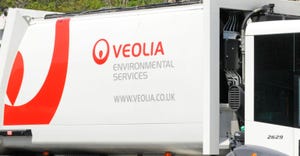Expanding the Filter

We are bombarded – daily and hourly – with voluminous amounts of online information coming at us from all directions and devices. It only makes sense, then, that we set filters to help us control the incoming and receive categories of interest. When I log onto my computer each morning, my inbox is full of stories about climate change, renewable energy, recycling and packaging.
I’m grateful for the technology that enables us to filter and have some say in what we consume from the overflowing trough of online news. But I am mindful as well that I need to revisit my list periodically, widen the filter and keep up with current events through other media sources. For example, I recently added environmental justice, a timely and relevant topic, to my feed.
My colleagues and I have noticed an increase in the number of articles about climate change over the past year and a half. And, because I look for patterns and connections, I’ve also noticed there is relatively little intersection between recycling and climate change in the stories I receive.
There are good reasons for both the increase in climate changes stories, and the lack of recycling discussion in them. Quite simply, we need to do a lot more than recycle if we are going to successfully slow the emissions associated with the GHG’s contributing to global warming. Recycling plays an important role in reducing emissions associated with the extraction and use of virgin resources, but for decades we’ve allowed recycling to serve as a proxy for environmental action, ignoring other important actions we must take to slow global warming. We can’t hide behind the good feelings we get when we toss something into the recycling bin as an excuse to ignore other opportunities to reduce GHG emissions.
Climate experts use science to evaluate where we need to focus our efforts, and theirs is a good course to follow. A recent article in Waste Management World® (A Circularity Gap Report Shows the Potential of a Circular Economy) notes that housing, mobility and food are responsible for 70% of global emissions. Our global societal and environmental challenge is providing these basic human needs while greatly reducing our environmental footprint. Indeed, there are scientific reasons why the Biden Administration’s climate policy focuses on renewable energy; reducing emissions associated with energy is our greatest single opportunity to help us stay below the 2-degree global warming limit required by the Paris Climate Accord.
Working in the waste and recycling industry, I think of this often. How can we maximize our impact – keeping the big picture in mind even as we are a smaller piece of the larger puzzle? What should our top priorities be?
One tool to help with this prioritization is the science of Lifecycle Thinking, which expands our filters beyond our own industry in order to understand and engage in the broader dialogue around sustainable material management, or SMM. Over a decade ago, the U.S. Environmental Protection Agency introduced SMM as an approach to materials management decision making (https://www.epa.gov/smm). The concept has struggled to catch on; the term doesn’t roll off the tongue as smoothly as Zero Waste or Circularity, and it’s a lot more complicated than the talking about recycling. But it is such an important concept that it has persisted, and there are glimmers of it taking root in several states.
Sustainable Materials Management asks us to keep that bigger picture in mind – the broader climate change news feed. It pushes for an analysis of each material and process when making decisions about production, produce use, and end of life of packages and goods. It looks at energy use, toxicity, water use and more. Understanding all these impacts facilitates better decision-making to optimize our impact. Using the concepts of SMM will lead to a focus on reduction of material use altogether, and other production, manufacturing and product use changes that are necessary to achieve our climate goals.
In the waste and recycling industry, we help our customers reduce their carbon footprint, and manage their remaining materials safely and sustainability. Recycling plays an important role, but it isn’t enough by itself. We can have an even greater impact by helping our customers reduce their waste. We can also reduce our industry’s carbon footprint by continuing to use renewable electricity and fuel in our own operations, and by capturing more methane at our landfills for beneficial use. Lifecycle thinking helps us to understand and prioritize these efforts, while helping our customers do the same.
And here’s a key takeaway from my perspective: Sustainable Material Management is advanced when we manage our information flow. In an online world where the volume of articles and studies can be overwhelming, finding the right balance of information to make smart, science-based decisions can be tricky.
The first step is to set wide enough filters to see beyond our immediate industry to understand, prioritize and take action for positive global climate change.
About the Author(s)
You May Also Like


